Jung WS10H Handleiding
Jung
Niet gecategoriseerd
WS10H
Bekijk gratis de handleiding van Jung WS10H (5 pagina’s), behorend tot de categorie Niet gecategoriseerd. Deze gids werd als nuttig beoordeeld door 36 mensen en kreeg gemiddeld 4.6 sterren uit 18.5 reviews. Heb je een vraag over Jung WS10H of wil je andere gebruikers van dit product iets vragen? Stel een vraag
Pagina 1/5

KNX Sensor and Transformer
Ref.-no.: WS 10 W, WS 10 HT, WS 10 R
Operating Instructions
Wind Sensor with Heating
Heating Transformer
Rain Sensor
c
1. Safety instructions
Attention: Electrical equipment must be installed and fitted by
qualified electricians only.
2. Wind Sensor Function
Wind sensor c serves for detecting and evaluating the wind velocity and
is provided for outdoor installation. It can be installed by means of the
attached mounting bracket.
Via a reed contact, the rotating speed is detected and converted into an
analogue output signal (0 ... 10 V).
An integrated heating (heating transformer option required) facilitates
operation during frost periods.
2.1. Wind Sensor Connection
Where:
1: white reference potential (earth)
2: brown 24 V DC operating voltage
3: green 0 .. 10 V + output
4: yellow 0 .. 10 V - output (earth)
5 + 6: grey / pink 24 V AC/DC heating transformer supply
Stand: Aug-08 325 061 13

KNX Sensor and Transformer
Ref.-no.: WS 10 W, WS 10 HT, WS 10 R
3. Rain Sensor Function
Rain sensor serves for detecting and evaluating the precipitation and
is provided for outdoor installation. It can be installed by means of the
attached 110° mounting bracket.
Via a meander and by utilising the conductivity of water, wetting by
precipitation is detected, evaluated and converted into an output signal
(dry = 0 V, rain = 10 V).
Intermediate values are not detected.
The output signal is reset only after the sensor surface has dried and
when an OFFdelay of 4 minutes has elapsed. The integrated heating
(additional heating transformer required as an accessory) accelerates the
drying process and melts ice and snow.
3.1. Rain Sensor Connection
Where:
1: white reference potential (earth)
2: brown 24 V DC operating voltage
3: green 0 .. 10 V + output
4 + 5: yellow/grey 24 V AC/DC heating transformer supply
4. Installation Instructions
• To supply the sensors (24 V DC) and to evaluate the sensor signals
an additional electronic device (e. g. the instabus weather station) is
required that can send measured value or command telegrams to the
instabus EIB, depending upon the analogue signals.
• Install the sensors in an accessible place to facilitate possibly
necessary cleaning.
• Do not install sensors in the vicinity of transmitting equipment (e. g.
mobile radio converters).
• Do not install sensor lines in parallel with lines carrying mains voltage
or loads.
To avoid electromagnetic irradiation keep a distance of a few
centimetres from such lines.
Note additionally for the wind sensor:
• Ensure correct positioning of the sensor (e. g. position not sheltered
from the wind).
Note additionally for the rain sensor:
• Do not damage the sensing surface and wipe with a mild cleaning
agent at a regular intervals.
• When installing the sensor, ensure unobstructed exposure to rain (do
not install under eaves).
2

KNX Sensor and Transformer
Ref.-no.: WS 10 W, WS 10 HT, WS 10 R
5. Heating Transformer Function
The heating transformer serves for the power supply of the heating
devices integrated into the rain sensors and wind sensors. Short-circuit
protection is implemented by means of an automatically resetting thermal
overload cut-out.
One rain sensor and one wind sensor, in each case, can be connected to
a heating transformer.
5.1. Heating Transformer Connection (Refer to Fig. )
UH1~: Sensor 1 connecting terminals.
UH2~: Sensor 2 connecting terminals.
Subject to technical modifications.
3
Product specificaties
| Merk: | Jung |
| Categorie: | Niet gecategoriseerd |
| Model: | WS10H |
Heb je hulp nodig?
Als je hulp nodig hebt met Jung WS10H stel dan hieronder een vraag en andere gebruikers zullen je antwoorden
Handleiding Niet gecategoriseerd Jung
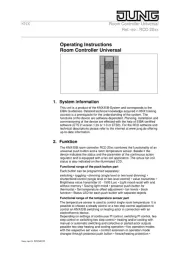
2 Augustus 2025
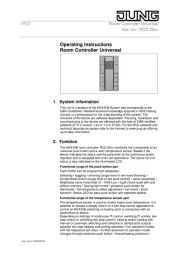
2 Augustus 2025
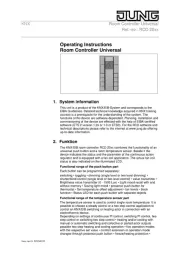
2 Augustus 2025
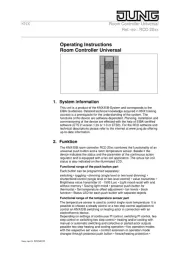
2 Augustus 2025
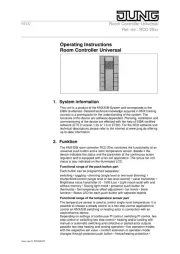
2 Augustus 2025
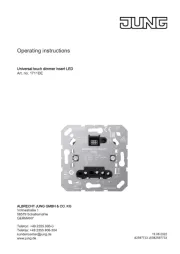
2 Augustus 2025
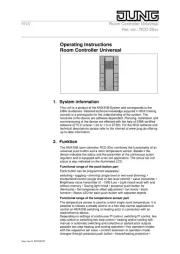
2 Augustus 2025
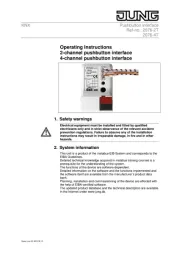
15 Juli 2025
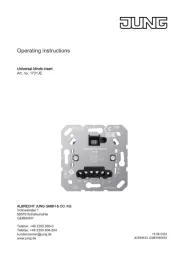
15 Juli 2025
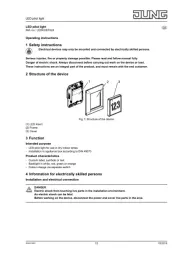
15 Juli 2025
Handleiding Niet gecategoriseerd
- Furman
- CM Storm
- Satco
- Kenton
- Ferroli
- Florabest
- Narwal
- Momini
- Enabot
- Prido
- Goal Zero
- Axa
- Jilong
- Cambium Networks
- CRUX
Nieuwste handleidingen voor Niet gecategoriseerd
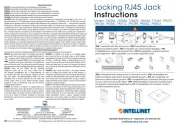
16 September 2025
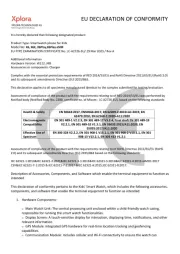
16 September 2025

16 September 2025
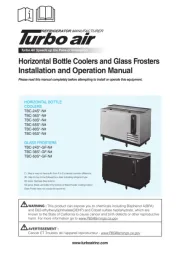
16 September 2025

16 September 2025
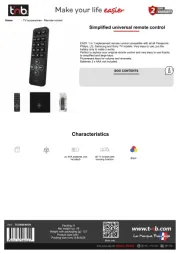
16 September 2025

16 September 2025
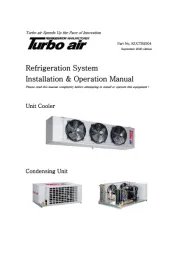
16 September 2025
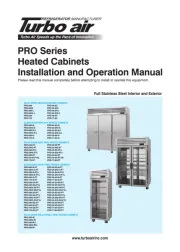
16 September 2025
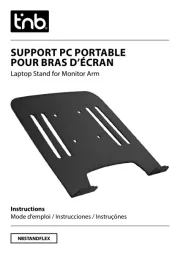
16 September 2025